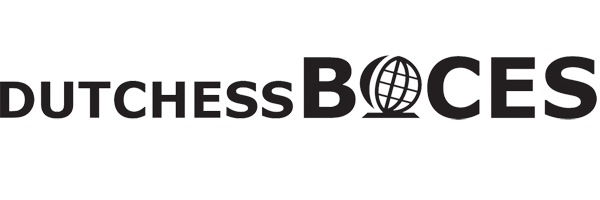Throughout convocation and the following Superintendent’s Conference Day, staff members gathered across campus with their colleagues to learn about changes, gain skills and collaborate to help make the 2025-26 great for our students.
SPC
- In a session centered on team building, Salt Point Center staff participated in an Amazing Race-style activity “New Faces, New Places”. Principal Melissa
Murphy and Assistant Principal Nicole Gardner, divided staff into small groups by birth month, with old and new staff members working together to follow a series of clues leading them on a scavenger hunt with a goal to visit new spaces and get to know each other.
- All 149 SPC staff and faculty members met for a welcome session Sept. 3, which Murphy kicked off by reminding everyone: “Your only job this week is to make each student feel welcomed, respected and loved. This is our school and the way your room looks means little in comparison to how they feel,” she said. She spoke about the many new faces, changes and additional classrooms, reiterating that SPC serves 24 school districts this year and is welcoming its largest kindergarten cohort amidst the nearly 200 students. “Relax, everything will come together and together we can come up with productive solutions,” she said.
Resilience Academy
- Resilience Academy teachers met in the Learning Commons with Dr. Amber Saracino to discuss the Dialectic Behavior Therapy (DBT) training initiated last year and make plans for this year.
The goal of DBT is to assist teachers in developing students’ emotional regulation skills. Comparing responses on pre and post year surveys, 60% of students found the assistance helpful with improvement in communication skills, conflict resolution and emotional coping strategies. This year, topics such as Mindfulness, Emotional Regulation and Stress Tolerance, will be included. Teachers will incorporate teaching these skills into the classroom throughout the day as well as during Wellness Wednesday sessions held during first period every other Wednesday.
- Principal Kiesha Tillman led a session on changes coming to the school including new courses (journalism is one), introducing the cell phone policy and the introduction of reflection slips, for students to learn from mistakes where they write out how they could have handled difficult situations and what can be done to repair relationships. “The whole goal is to change behavior … I have no problem suspending, but it’s not going to change the behavior problem because there’s no magic outside,” Tillman said. “You are not your mistake, however you need to own it and you need to make better decisions along the way.”
CTI
- Led by CTI’s assistant principals Brian Conte and Damian Lamm, this session focused on how to seamlessly incorporate math, science and English into CTI’s varied programs and the importance of trade and academic teachers working together to create comprehensive
lesson plans centered on their respective trade. Science teacher Amy Smith shared that even if she is not needed on a particular day, she attends every trade class she works in to become more familiar with it and better determine how to help the students. “We should be there even if we don’t know yet what we want to address,” she said.
Related and Itinerant services
- A session on social-emotional impact of trauma on school-aged children focused on how related and itinerant service providers, including counselors, occupational and physical therapists and teachers of the blind or hearing impaired, can help students learn to regulate their
behavior. Students who have trauma tend to benefit from consistency, predictability, clear expectations and anchors during sessions – such as a greeting, same seating, a ritual to start and end the session and use of visual schedules, presenter Dr. Amber Saracino shared. She said that research shows trauma is stored in the body, therefore, body-based strategies such as breathing or wall-based push-ups, may help regulate behavior. The group came up with more than 30 ideas to help students, which were shared in a Google document.
- Occupational therapist Lisa Serlin spent time Sept. 3 setting up the occupational and physical therapy room in the Resilience Academy. Students spend time using exercise balls, trampolines and weights for physical therapy, while others work with Serlin on fine motor and life skills, including folding laundry and preparing simple meals. “What we’re trying to do is help them be more independent when they leave us,” Serlin said. “We have them do tasks where they’re required to do things that they would do at home.” Serlin noted that much of what she and her colleagues do is reinforce what students are learning in the classroom and they work with work-based learning students on tasks they need to perform for their jobs.
